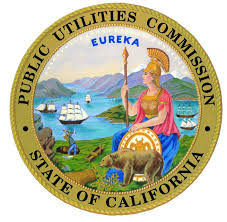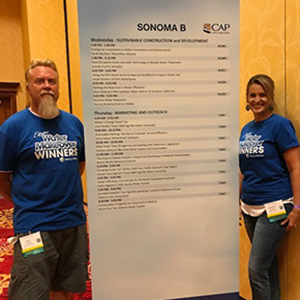The California Water Association (CWA), in comments filed November 16, 2015 in an ongoing California Public Utilities Commission (CPUC or Commission) policy proceeding on behalf of its Class A and B water utility members (those serving more than 2,000 customer connections), urged the Commission to adopt a policy statement endorsing the request for use of Advanced Metering Infrastructure (AMI) technology by water utilities.
AMI is an integrated system of digital electronic meters, communications networks and data management systems that enables two-way communication between the meter and the utility’s central information technology system, and then between the utility and its customers. These digital meters, also known as smart meters, measure consumption in periodic intervals – as often as an hour or less – and then send that information back to the utility for monitoring, compliance, trouble-shooting, customer service and billing purposes.
AMI, CWA noted in its comments, is the foundation upon which timely water-use data can be provided to customers and companies – data that will further the goals of efficiency and conservation while allowing for more responsive service and communications. The proceeding in question, an Order Instituting Rulemaking (OIR) seeking new policies that will better align costs, rates and revenues, as well as other functions such as sales forecasting and timely cost recovery, involves the heart of water regulation – rate design, just and reasonable rates and revenue stability. Because of the importance of the proceeding, CWA warned that “any drastic changes to rate design to encourage particular customer behavior will be ineffective if the customer does not have timely access to water usage information,” which can only be achieved through investments in modern water meter technology.
The occasion that spawned the comments was an October 13-15, 2015, workshop devoted to consideration of whether the Commission should take action with regard to rate design, authorized regulatory accounting mechanisms and the deployment of innovative technology – all with the intention of helping the Commission achieve its statutory and regulatory objectives.
In its comments, CWA stated how important it was for the Commission to bear in mind the differences among Commission-regulated water companies and to make sure that any adopted policies or recommendations preserve all the water utilities’ ability to respond to their unique operational and customer needs. Among other things, CWA proposed revisions to most of the Goals and Objectives for the Redesign/Realignment of Water Utility Regulation, which were attached to the administrative law judge’s ruling that defined the scope of the workshop. CWA noted the consensus reached at the workshop on the goals and objectives and suggested the revised version should serve as guiding principles for the adoption of specific policies in the proceeding.
CWA further noted that the current extreme drought may not be the optimal time to make drastic changes to rate design and cost-recovery processes. Instead, CWA recommended the Commission set policy directions that will support the development of more accurate sales forecasts and more cost-reflective rate designs. Additionally, CWA offered solutions that will allow those companies with significant shortfalls in actual sales and revenues, relative to their Commission-approved sales and revenue levels, the ability to adjust sales forecasts much more frequently than once in three years and the ability to amortize their shortfall balances in a timelier manner, without having to resort to new rate increases, as is the case currently with dozens of public water agencies throughout the state.
Returning to the AMI discussion, CWA noted that during the summer, the water companies held multiple public meetings as part of the implementation of their drought management plans made in response to the state mandate to reduce water usage. During these meetings, customers repeatedly expressed frustration with the lack of timely information regarding water usage and indicated an interest in technology that could provide them with daily usage information, alerts and other ways to help them achieve the reduction goals set by the state and their water providers. The installation of AMI technology on customer meters would allow water companies to provide near real-time feedback on water losses, leaks, consumption and cumulative usage. Many of these customers are familiar with the energy meter technology already installed and want the same access to information for their water service.
Rather than a willy-nilly rush to install AMI technology, CWA recommended that the CPUC endorse an orderly four-stage, concurrent deployment: (1) in the ongoing conversion of all flat-rate service customers to metered service; (2) in the change-out installations of all aging or obsolete meters; (3) in the installation or replacement of meters at new or reconstructed homes and businesses; and (4) by gradual deployment to replace or equip existing meters on a rolling geographic basis over one or more rate case cycles.





